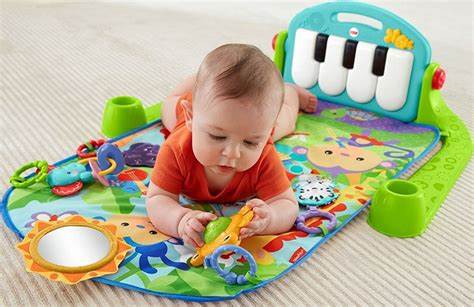Holding a newborn or infant can feel daunting, especially for new parents or those not accustomed to handling tiny humans. The key to a secure and comfortable hold is proper support, focusing particularly on the baby’s delicate head and neck. Babies, especially newborns, lack the muscle strength to support their own heads, making your support absolutely critical. This guide will provide detailed, step-by-step instructions on various safe and supportive ways to hold a baby, ensuring both your peace of mind and your baby’s comfort.
Why Proper Support is Crucial When Holding a Baby
A baby’s head, especially in the first few months, is disproportionately large and heavy compared to the rest of their body. Their neck muscles are underdeveloped and cannot withstand the weight of their head. Without proper head and neck support, a baby’s head can flop backward or to the side, leading to:
- Injury: The most serious concern is potential injury to the neck muscles, ligaments, or even the spinal cord. This is often referred to as Shaken Baby Syndrome (though caused by shaking, poor head support can mimic some effects).
- Discomfort: A poorly supported head will make the baby feel insecure and uncomfortable, leading to fussiness.
- Difficulty breathing: In some positions, inadequate head support could compromise a baby’s airway.
Therefore, the golden rule of holding a baby is always to support the head and neck.
General Principles for All Baby Holds
Before we dive into specific holds, keep these universal principles in mind:
- Wash Your Hands: Always wash your hands before handling a baby to prevent the spread of germs.
- Be Calm and Confident: Babies can sense your demeanor. A calm and confident approach will make both of you more comfortable.
- Communicate with the Baby: Talk to your baby as you pick them up and hold them. This helps them feel secure.
- Clear the Area: Ensure you have a clear, safe space to sit or stand before picking up the baby. Remove any tripping hazards.
- Support the Head and Neck FIRST: No matter the hold, always ensure your hand or arm is supporting the baby’s head and neck before lifting them fully.
- Support the Bottom/Back: The baby’s bottom or back also needs firm support to prevent slumping or falling.
- Observe Your Baby: Pay attention to your baby’s cues. Are they comfortable? Are they fussing? Adjust your hold as needed.
Step-by-Step Guide: Common and Safe Baby Holds
Here are several popular and safe ways to hold a baby with proper support.
- The Cradle Hold (Most Common for Newborns)
This is often the first hold parents learn and is perfect for feeding, cuddling, and gentle rocking.
- Step 1: Position Your Arms: Sit or stand comfortably. Place one arm under the baby’s head and neck, with your hand extending to support their upper back.
- Step 2: Position Your Other Arm: Use your other arm to support the baby’s bottom and lower back.
- Step 3: Gently Lift: Gently lift the baby, keeping their head cradled in the crook of your elbow or forearm. Your hand should be on their upper back, supporting their spine.
- Step 4: Bring Close to Body: Bring the baby close to your chest. Their body will rest along your forearm, with their bottom supported by your other arm/hand. Their head should be at the level of your elbow.
- Support Check: Ensure the baby’s head is fully supported and doesn’t flop back. Their spine should be in a relatively straight line.
- The Shoulder Hold (Great for Burping and Eye Contact)
This hold is excellent for burping after a feed and for making eye contact as the baby gets a different view.
- Step 1: Initial Lift (Cradle First): Start by picking up the baby in a cradle hold to ensure initial head and neck support.
- Step 2: Transition to Shoulder: Slowly bring the baby’s body upright, resting their head gently on your shoulder.
- Step 3: Support the Head and Neck: Place one hand firmly on the baby’s head and neck, ensuring it’s fully supported and not pressing uncomfortably into your shoulder. Your fingers can cup the back of their head.
- Step 4: Support the Bottom/Back: Use your other arm to support the baby’s bottom and lower back. Your hand should cup their bottom or be flat against their lower back.
- Support Check: The baby’s head should be resting securely on your shoulder, not flopping. Your hand provides critical stability.
- The Football Hold (Good for Feeding, Especially Bottle-Feeding, and Acid Reflux)
This hold is particularly useful for smaller babies, during bottle-feeding, or if a baby has acid reflux.
- Step 1: Position Your Arm: Sit or stand. Place your arm (e.g., right arm) along the baby’s back, with your hand supporting their head and neck, fingers spread. The baby’s body will be tucked under your arm, similar to holding a football.
- Step 2: Position Your Other Arm: Use your other arm to support the baby’s bottom and legs.
- Step 3: Lift and Secure: Gently lift the baby, ensuring their head is firmly supported by your hand and forearm. Their legs will extend past your elbow.
- Support Check: The baby’s head must be securely in your hand, not dangling. Their back should be straight along your forearm.
- The Belly Hold / Colic Hold (Relieves Gas and Colic)
This soothing hold can help alleviate gas and colic symptoms.
- Step 1: Lay Baby Face Down: Carefully lay the baby face down along one of your forearms.
- Step 2: Support Head and Neck: Your hand should support the baby’s head and neck, with their face turned to the side to allow for clear breathing.
- Step 3: Support Torso and Legs: Your forearm will support their belly and chest, applying gentle pressure that can help with gas. Their legs will dangle on either side of your arm.
- Step 4: Use Other Hand for Security/Patting: Your free hand can be placed on the baby’s back for added security or used to gently rub or pat their back.
- Support Check: Ensure the baby’s head is not pressing against your arm in a way that obstructs breathing. Their airway must be clear.
- The Sitting Hold (For Older Babies with Better Head Control)
Once your baby develops better head control (usually around 3-4 months), this hold allows them to look around more easily.
- Step 1: Position Your Arms: Sit down. Place one arm around the baby’s back, bringing your hand under their armpit to support their chest and upper back.
- Step 2: Support the Bottom: Use your other arm to support the baby’s bottom and thighs, similar to how they would sit on your lap.
- Step 3: Gently Lift: Lift the baby, keeping their back supported and their bottom secure. While they have better head control, still be mindful of sudden movements.
- Support Check: Ensure their back is straight and they feel stable. If their head still wobbles significantly, revert to a hold with more direct head support.
Things to Avoid When Holding a Baby
- Never allow the head to flop: This is the most critical rule.
- Don’t hold by the arms or legs: Never pull or lift a baby by their limbs.
- Avoid rough movements or shaking: This can cause severe injuries.
- Don’t pinch or squeeze: Be gentle and avoid putting pressure on soft spots.
- Don’t hold unsafely if tired: If you’re exhausted, sit down or ask for help to ensure you maintain a secure grip.
My Personal Experience: The Learning Curve
I vividly remember the initial apprehension of holding my firstborn. They felt so tiny and fragile! The nurses in the hospital were invaluable, gently guiding my hands and showing me how to cradle their head. It felt awkward at first, almost as if I had “butterfingers.” But with practice, picking them up and holding them became second nature. The key was consciously remembering to bring my hand to their head first, before lifting. And even as they grew and gained more head control, that habit of providing solid support never left me. It’s truly a skill that builds confidence with every secure embrace.
Conclusion
Holding a baby with proper support is fundamental to their safety and comfort. By consistently supporting their head and neck, and providing a secure base for their body, you can create a calm and bonding experience for both you and your little one. Practice these different holds, find what feels most comfortable for you and your baby, and always prioritize safety. With a little time and patience, you’ll become a confident and capable baby holder.





